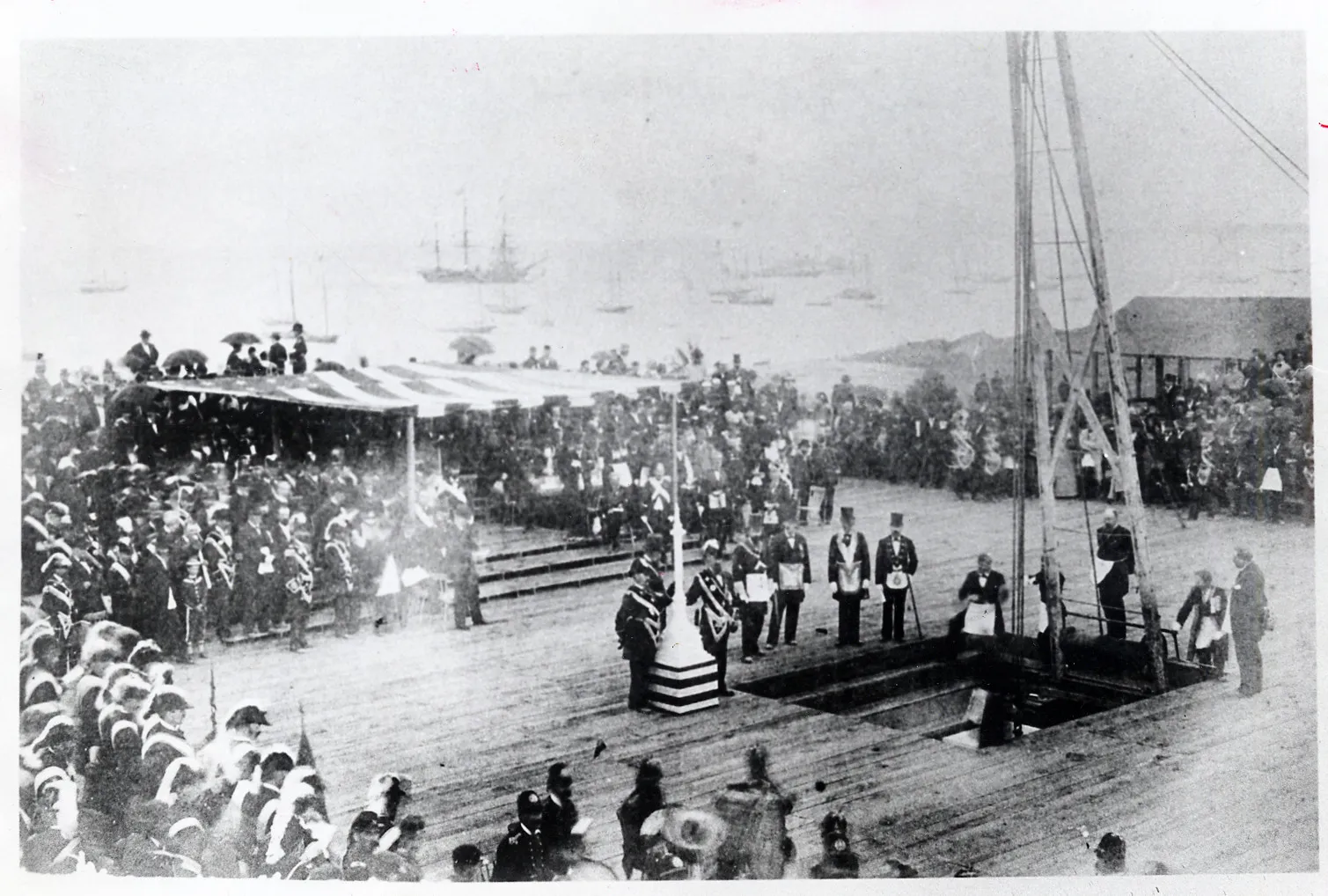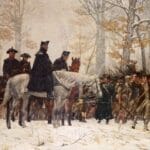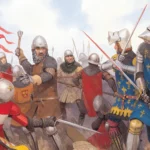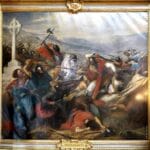The victory at Yorktown stands as a monumental triumph for the Continental Army in the Revolutionary War. When General Cornwallis surrendered to George Washington and the combined American and French forces on October 19, 1781, it ignited a wave of jubilation across the newly formed nation. This victory wasn’t merely another battle won; it was a pivotal turning point in the war, signifying the inevitable birth of the United States of America.
Yorktown Victory Celebrations
Imagine the electric atmosphere in the fall of 1781. After years of relentless struggle and sacrifice, the American colonies teetered on the precipice of a momentous victory. The news, as swift and impactful as a cannon blast, spread throughout the land – the British had surrendered at Yorktown! Churches erupted in joyous bell-ringing, bonfires illuminated the night sky, and citizens poured into the streets, their faces a mixture of relief, jubilation, and disbelief. This hard-fought victory, secured with the invaluable assistance of their French allies, represented the culmination of years of unwavering determination and the promise of a brighter future.
Today, the echoes of that momentous victory continue to resonate in Yorktown, Virginia. The American Revolution Museum at Yorktown invites visitors to journey back in time and experience the thrill of that pivotal moment. Through immersive exhibits, evocative reenactments, and meticulously preserved historical sites, the museum paints a vivid tapestry of life and victory during those heady days.
The commemoration reaches its zenith each year on October 19th, as Yorktown bursts into life with the annual Yorktown Victory Celebration. This immersive experience allows visitors to witness the thunderous roar of 18th-century artillery, explore captivating exhibits, and engage with knowledgeable historical interpreters who breathe life into the past.
Highlights of the Yorktown Victory Celebration Include:
| Event | Description |
|---|---|
| Artillery Firings | Experience the raw power of 18th-century artillery as historical interpreters demonstrate the awe-inspiring firing of cannons. |
| Exhibits | Delve into exhibits showcasing a captivating collection of artifacts, documents, and interactive displays that narrate the story of the Siege of Yorktown and its profound historical significance. |
| Interpreters | Engage in lively conversations with costumed historical interpreters who transport visitors back in time, sharing captivating stories and insights into the lives of soldiers, civilians, and key figures from the Revolutionary War. |
| Yorktown Day Parade & Exercises | Witness a grand parade through the heart of historic Yorktown, followed by moving patriotic ceremonies commemorating the anniversary of this momentous victory. |
The experience extends beyond the museum walls. Visitors can stroll through the very grounds where history unfolded, from the iconic Victory Monument, etched with the saga of the war and the Franco-American alliance, to the meticulously preserved battlefield and colonial town. Each step in Yorktown offers a tangible connection to the birth of a nation.
Come, immerse yourself in the legacy of Yorktown. Relive the victory that irrevocably altered the course of history and celebrate the enduring spirit of freedom that continues to inspire generations.
What Events Occurred in the Victory at Yorktown?
The year is 1781. The British, led by General Cornwallis, found themselves in a precarious position, bottled up in Yorktown with seemingly limited options for escape. The American forces, under the command of General George Washington, along with their French allies led by the Comte de Rochambeau, devised a strategic masterstroke – they would lay siege to Yorktown.
The siege commenced on September 28th. American and French troops, working in unison, dug trenches and constructed a formidable network of fortifications, effectively encircling the British. A relentless bombardment ensued, with cannon fire raining down upon the trapped British troops. The siege raged for three grueling weeks, a chaotic symphony of explosions, musket fire, and desperate charges.
The British, desperate to break free from the tightening noose, launched several attempts to breach the American lines, but each attack was repelled. On October 19th, with his options dwindling and defeat seemingly inevitable, General Cornwallis raised the white flag of surrender.
The surrender at Yorktown reverberated across the globe. It was a watershed moment, a testament to the tenacity and resolve of the American colonists and their unwavering commitment to securing their independence. News of the American victory reached the halls of Parliament in London, forcing the British government to acknowledge the unwinnable nature of the conflict. This realization laid the groundwork for the signing of the Treaty of Paris in 1783, officially recognizing the United States as a free and independent nation.
The victory at Yorktown serves as a poignant reminder of the power of collaboration, strategic thinking, and unwavering determination in the face of adversity. It is a testament to the indomitable spirit that birthed a nation and continues to inspire generations.
What Did the Victory of Yorktown Show?
The victory at Yorktown was more than a military triumph; it was a resounding declaration to the world: The American colonists were not a rebellious faction to be quelled but a determined force fighting for their rightful place among nations. Their unwavering commitment to liberty, even when facing a larger, more experienced British army, served as a beacon of inspiration.
Outnumbered, outgunned, and often lacking essential supplies, the Continental Army, driven by an unwavering belief in their cause, persevered against seemingly insurmountable odds. Their spirit, their refusal to yield to tyranny, was a crucial element in their ultimate triumph.
General George Washington’s strategic brilliance was equally instrumental in securing victory at Yorktown. His ability to outmaneuver and trap the British army solidified his reputation as a military leader of exceptional skill and foresight.
The critical alliance with France cannot be overstated. The French provided much-needed soldiers, ships, and supplies, proving that even global superpowers like Great Britain were not invincible. This collaboration broadened the scope of the conflict, transforming it from a colonial rebellion into an international event with far-reaching implications.
Perhaps most importantly, the victory at Yorktown demonstrated that American independence was not a distant dream but an attainable reality. The victory breathed new life into the revolution, galvanizing the colonists and convincing skeptical international observers that the United States possessed the mettle to stand as a free and independent nation.
While Yorktown marked a significant turning point, the American Revolution was not yet over. Battles continued, and challenges remained. However, Yorktown provided a much-needed surge of hope, proving to the world and to themselves that the colonists were capable of achieving the seemingly impossible. Today, Yorktown endures as a symbol of American determination, resilience, and the unwavering power of unity in the face of adversity.
What Day is Yorktown Day?
Every year, on October 19th, we commemorate the anniversary of the momentous victory at Yorktown, a day etched in the annals of American history as Yorktown Day.
This day is not merely a celebration of a single battle but a tribute to the spirit of the American Revolution itself. It is a day to remember the courage and sacrifice of those who fought for the ideals upon which the United States was founded.
The Battle of Yorktown, which raged from September 28th to that glorious October 19th in 1781, was the culmination of a long and bloody conflict. The British army, led by General Cornwallis, found themselves trapped on the Yorktown peninsula, surrounded by the combined forces of the American Continental Army, led by General George Washington, and their French allies.
Cornwallis’s surrender on October 19th effectively marked the end of major hostilities in the Revolutionary War. The victory paved the way for the signing of the Treaty of Paris in 1783, officially recognizing the United States as a free and independent nation.
Today, Yorktown Day is celebrated with a vibrant mix of historical reenactments, parades, and ceremonies held at the American Revolution Museum at Yorktown, the Yorktown Battlefield, and throughout historic Yorktown. It is a time to reflect on the sacrifices made by previous generations and to celebrate the enduring legacy of liberty and self-governance that defines the United States.
What are Two Interesting Facts About the Battle of Yorktown?
While the broad strokes of the Battle of Yorktown are widely known, delving into the details reveals a story richer and more nuanced than often portrayed. History, at its core, is a tapestry of seemingly insignificant events and unlikely alliances, and the Battle of Yorktown is no exception.
First, the victory at Yorktown was not solely an American triumph. The Continental Army, while undoubtedly the heart and soul of the revolution, received crucial support from an unexpected ally – France. The French provided not only manpower but also, crucially, naval power, which proved instrumental in blockading the Chesapeake Bay, effectively trapping the British and cutting off their escape. The Franco-American alliance was a testament to the shared ideals of liberty and a strategic masterstroke that ultimately tipped the scales in favor of the Americans.
Second, British General Cornwallis, despite facing unfavorable odds, was a skilled military leader who did not simply await defeat. He fortified his position, digging trenches, erecting barricades, and even resorting to sinking some of his own ships to obstruct the York River. These desperate measures, while ultimately unsuccessful, highlight the intensity of the fighting and Cornwallis’s determination to hold Yorktown.
The Battle of Yorktown serves as a reminder that history is rarely black and white. It was a complex tapestry woven from unexpected partnerships, calculated risks, and a shared yearning for freedom.
Where is General Cornwallis’ Sword Now?
The surrender of General Cornwallis at Yorktown was a symbolic moment, and his sword, a tangible representation of British defeat, became a prized artifact. Following the surrender, the sword was presented to General Washington as a symbol of victory. It was initially kept at West Point, the prestigious American military academy, where it undoubtedly served as a source of inspiration for aspiring soldiers.
However, in a gesture of reconciliation and burgeoning friendship, the United States gifted the sword to Queen Victoria of England in 1840. This act of diplomacy symbolized a desire to move beyond the conflicts of the past and forge a new era of peaceful relations between the two nations.
Today, General Cornwallis’s sword can be viewed at the Royal Armouries Museum in Leeds, England. Its journey across the Atlantic and its current resting place serve as a poignant reminder of the complexities of history, the evolution of international relations, and the enduring power of symbolic objects.
How Many People Died in Yorktown?
While the victory at Yorktown is celebrated as a pivotal moment in American history, it is essential to remember that this victory, like all victories, came at a cost – lives lost on both sides of the conflict.
Determining the precise number of casualties at Yorktown is challenging. Record-keeping practices in the 18th century were not as rigorous as they are today, and some records have been lost or destroyed over time. Additionally, the definition of a battlefield death can be ambiguous, as some soldiers may have succumbed to their wounds or infections days or even weeks after the fighting ceased.
Based on available records and historical analysis, historians estimate that the combined American and French forces lost fewer than 100 soldiers at Yorktown. The British, however, suffered significantly heavier losses, with estimates ranging from 150 to 200 soldiers killed.
It is crucial to acknowledge that these figures only represent a fraction of the true human cost of the Battle of Yorktown. Civilians caught in the crossfire, disease outbreaks that often accompanied military campaigns, and the long-term psychological impact on survivors are factors that are difficult to quantify but undoubtedly contributed to the overall toll of the conflict. Ongoing research continues to shed light on the less-documented aspects of the battle, revealing a more complete picture of the devastating impact of war.
What Events Happened in 1783?
The year 1783 marked a pivotal turning point in the history of the fledgling United States, as it transitioned from a colony embroiled in a fight for survival to a recognized independent nation on the world stage.
The Treaty of Paris, formally signed in September 1783, was the culmination of years of struggle and sacrifice. This document, meticulously negotiated and signed by representatives of the United States, Great Britain, France, and Spain, officially ended the American Revolutionary War and acknowledged the sovereignty of the United States.
In November of that same year, British troops, a long-standing symbol of British rule, finally withdrew from New York City. This evacuation marked the definitive end of British military presence in the newly formed nation, symbolizing a true transfer of power and the dawn of a new era.
The departure of the British troops was met with a mixture of elation and apprehension. The fledgling nation, free from the shackles of colonialism, was now faced with the daunting task of self-governance, nation-building, and establishing its place in a complex and ever-shifting global landscape.
What Happened at the Battle of Yorktown Civil War?
The term “Battle of Yorktown Civil War” often leads to confusion. While Yorktown stands as a pivotal location in American military history, the significant battle that occurred there took place during the American Revolution, not the Civil War.
The Battle of Yorktown, fought from September 28th to October 19th, 1781, was a decisive victory for the American colonies in their fight for independence from Great Britain.
The American Continental Army, under the command of General George Washington, along with their French allies, laid siege to the British army led by General Cornwallis, who was trapped on the Yorktown peninsula. The combined American and French forces outmaneuvered and overwhelmed the British, leading to Cornwallis’s surrender.
This decisive victory at Yorktown is widely recognized as the turning point of the American Revolution, ultimately leading to the British recognition of American independence in the Treaty of Paris.
What Did Alexander Hamilton Do in the Battle of Yorktown?
Alexander Hamilton, despite his young age, played an active and critical role in the decisive Battle of Yorktown. He was entrusted with leading a light infantry battalion, a highly mobile and versatile force, within the division commanded by the Marquis de Lafayette.
Hamilton’s moment of truth arrived with the task of capturing Redoubt Number Ten, a heavily fortified British position crucial to their defenses. Under the cover of night, Hamilton and his men launched a daring and meticulously planned assault. The element of surprise proved to be a decisive factor, as they successfully overwhelmed the British defenders and secured the redoubt.
This victory, attributed in part to Hamilton’s strategic acumen and leadership, provided a much-needed morale boost to the American forces and significantly weakened the British position. The capture of Redoubt Number Ten is still studied in military academies today, often cited as an example of a well-executed nighttime assault.
While some historians debate the overall significance of Hamilton’s role in the larger context of the Battle of Yorktown, his bravery, tactical prowess, and unwavering commitment to the cause of American independence are undeniable. His actions at Yorktown contributed to the British surrender and helped secure the freedom of a nation.
What Was a Decisive Factor in the American Victory at Yorktown, Virginia?
The American victory at Yorktown, Virginia, was not the result of a single decisive factor but rather a confluence of strategic advantages, unwavering determination, and a bit of good fortune.
One of the most significant contributing factors was the indispensable support of the French navy. Their ability to control the Chesapeake Bay prevented British reinforcements from reaching Cornwallis’s besieged army, effectively sealing their fate. This naval blockade, a testament to the strength of the Franco-American alliance, was strategically crippling to the British and highlighted the significance of naval power in determining the outcome of the war.
Yorktown’s geographic location also played a critical role. Situated on a peninsula, the area was vulnerable to a siege, which allowed the combined American and French forces to surround Cornwallis’s army and cut off their supply lines. The British found themselves trapped, with the Americans and French controlling both land and sea.
The victory at Yorktown was a culmination of years of struggle, sacrifice, and strategic planning. The combined might of the American and French forces, coupled with the strategic importance of Yorktown and the unwavering leadership of individuals like George Washington and Alexander Hamilton, ultimately led to the British surrender, signaling the dawn of a new nation.
- China II Review: Delicious Food & Speedy Service - April 17, 2025
- Understand Virginia’s Flag: History & Debate - April 17, 2025
- Explore Long Island’s Map: Unique Regions & Insights - April 17, 2025
















